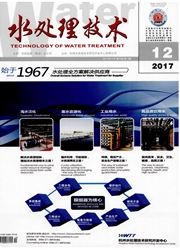

 中文摘要:
中文摘要:
本文介绍了基于联苯多元酰氯单体的聚酰胺反渗透和纳滤复合膜材料体系。通过系统研究聚合物的官能团含量、取代基位置等因素对反渗透复合膜性能的影响,揭示了有价值的实验规律:a.通过调节酰氯单体的官能度,可以实现对反渗透复合膜的性质,包括表面形貌、表面化学组成、表面荷电性质的调控,从而实现对复合膜分离性能及抗污染性能的调控;b.可以利用联苯多元酰氯单体制备得到纳滤复合膜,所得纳滤膜的孔径和荷电性质可以通过调节制膜工艺实现调控。这些结果,为进一步优化制膜工艺,提供可供产业化生产的新型反渗透和纳滤复合膜制备技术奠定了基础。
 英文摘要:
英文摘要:
Reverse osmosis (RO) and nanofiltration (NF) separation are effective technolo-gies,and have been used in many fields such as the desalination of seawater,ultrapure water production,wastewater treatment as well as water softening. Since the inherent chemistry of the monomers employed in the interfacial polymerization is believed to play a major role in de-termining the properties of the resulting TFC membranes,a deeper insight into the relationship between the properties of the membrane chemistry and the chemistry of functional monomers is necessary. In the present report,series of novel RO as well as NF membranes based on new type of polyacyl chloride monomers have been prepared. We systematically investigated the in-trinsic relationship between the physicochemical properties,transport performance as well as anti-fouling properties of the resultant membranes and the chemistry the polycayl chloride monomers. The result reveal that,as the functionality of the acid chloride monomer increased, the resulting membrane skin layer became more negatively charged,thinner and smoother,and better antifouling ability. All the four membranes exhibited close salt rejection rates. Additional-ly,a novel positively charged thin film composite NF membrane was prepared utilizing the highly functional 2,2’,4,4’,6,’6-biphenyl hexaacyl chloride (BHAC) monomer. This NF membrane exhibits high efficiencies for many NF applications including rejection of divalent cations,removal of basic dyes and selective separation of mixed cations.
 同期刊论文项目
同期刊论文项目
 同项目期刊论文
同项目期刊论文
 Enhancing Activity of Suzuki Reactions in Water by Using Guanidinium Ionic Liquid Stabilized Palladi
Enhancing Activity of Suzuki Reactions in Water by Using Guanidinium Ionic Liquid Stabilized Palladi A novel guanidinium grafted poly(aryl ether sulfone) for high-performance hydroxide exchange membran
A novel guanidinium grafted poly(aryl ether sulfone) for high-performance hydroxide exchange membran Synthesis of multi-block poly(arylene ether sulfone) copolymer membrane with pendant quaternary ammo
Synthesis of multi-block poly(arylene ether sulfone) copolymer membrane with pendant quaternary ammo Thin film composite nanofiltration membranes fabricated from quaternized poly(ether ether ketone) wi
Thin film composite nanofiltration membranes fabricated from quaternized poly(ether ether ketone) wi Preparation and characterization of novel positively charged copolymer composite membranes for nanof
Preparation and characterization of novel positively charged copolymer composite membranes for nanof 期刊信息
期刊信息
